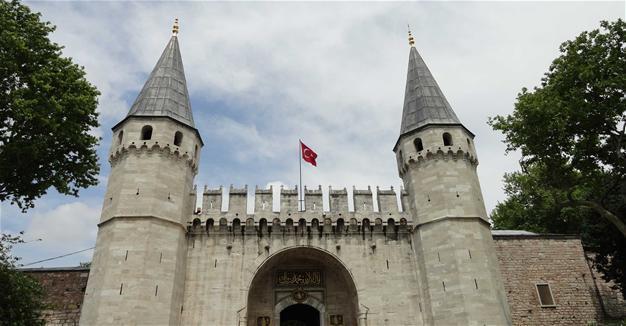Istanbul’s Topkapı Palace at risk of collapse, needs urgent repair
Ömer Erbil – ISTANBUL
 Istanbul’s Topkapı Palace is facing risk of collapse, as it has been determined that the ground on which it is situated is sliding toward the Sarayburnu district on the coast of the Marmara Sea. The authorities have also determined that there has been dangerous “ground liquidation” under the palace.
Istanbul’s Topkapı Palace is facing risk of collapse, as it has been determined that the ground on which it is situated is sliding toward the Sarayburnu district on the coast of the Marmara Sea. The authorities have also determined that there has been dangerous “ground liquidation” under the palace.On Sept. 26, 2016, daily Hürriyet had reported that deep crevices were found in the treasury room of the Ottoman-era palace, the Conqueror Kiosk, prompting its closure to tourists.
The Culture and Tourism Ministry later agreed that the serious cracks on the kiosk’s basement floor walls were “deformations that go beyond the crack area and have reached the discrete and slit levels.”
Major restoration worth around 10 million Turkish Liras was later initiated at the palace.
It has now emerged that the cracks resulted from a ground slide and the Culture and Tourism Ministry experts initiated work to save the historic building from collapse.
Rather than conduct a temporary repair, the authorities investigated the reasons for why deep crevices were formed in the palace. For this reason, workers dug a total of 26 drilling holes inside and outside the palace in order to measure seismic activities. In addition, the water pressure under the ground was also investigated.
The data obtained from the devices used in the previous processes are going to be transferred to a data bank via GPRS. The authorities have stated that the devices were made in order for the palace to be kept under track for long years.
Culture and Tourism Minister Nabi Avcı has denied that the ground slide was triggered by the construction of the Marmaray tunnel, linking the European and Asian sides of Istanbul, and the Eurasia Tunnel project.
“We have no scientific data of such an affect,” Avcı told journalists on Jan. 22.
Moreover, it has been concluded that the blockages in the palace’s drainage system, which was constructed in the 1920s, and the inability to discharge waste water, had increased the ground liquidation under the palace.
It was also concluded that the reason for the collapse of the sustaining walls in the area stemmed from these problems in the ground.
The method for the static fortification of the historic building has been determined by restorers, who have suggested steel rods to be hammered around the palace in order to stop the ground from sliding.
However, remains estimated to be from the Roman era have been determined under the ground via the georadar method, and the restorers’ work is made much more difficult due to these remains.
The Topkapı Palace, which overlooks the confluence of the Bosphorus and the Marmara Sea, was one of the major residences of the Ottoman sultans for almost 400 years (1465-1856) during the empire’s 624-year history.
It is now a museum and a major tourist attraction, containing a number of important relics of the Muslim world.
















